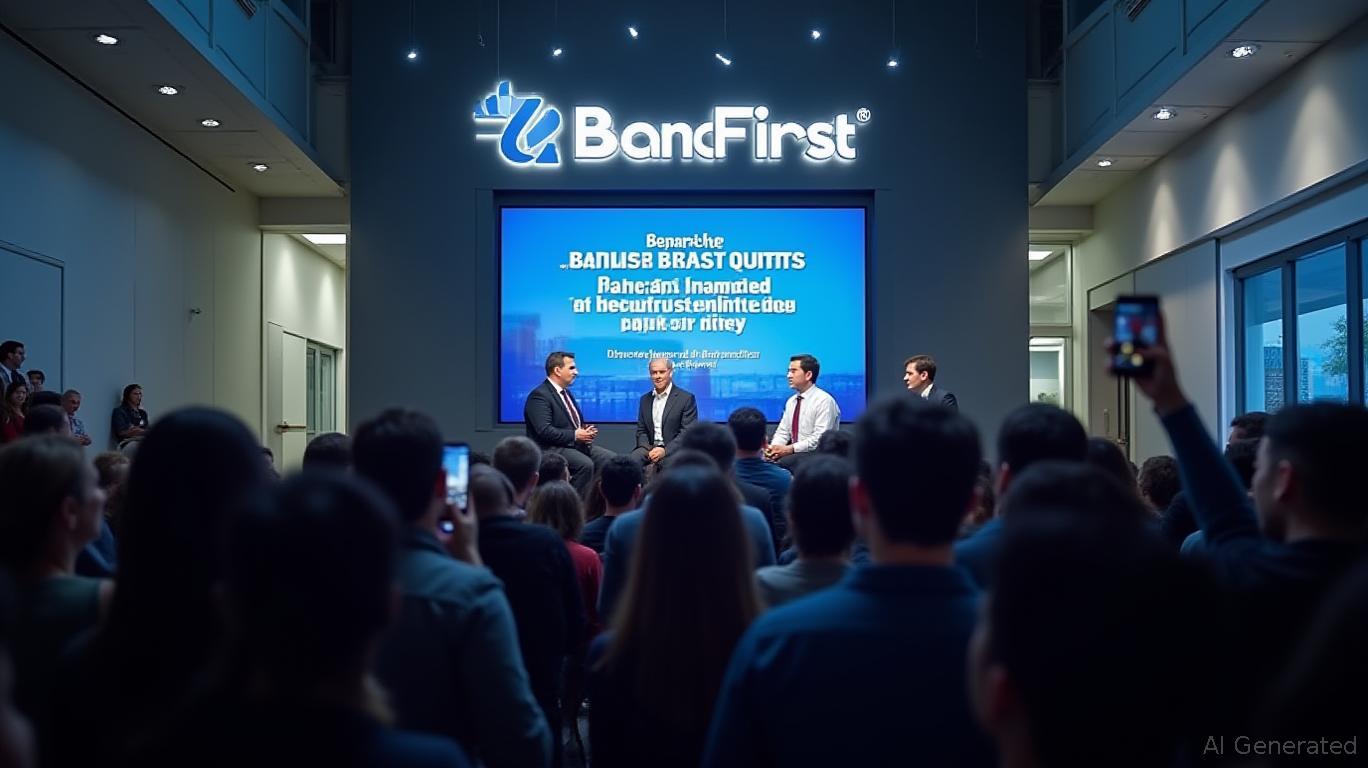BancFirst Corporation (BANF): Balancing Technical Optimism with Fundamental Risks Ahead of Potential Downgrades
The stock price of
(BANF) has hovered near $118.54 in recent trading, drawing investor attention to whether this is a strategic entry point or a warning sign of looming risks. With analysts revising price targets and technical indicators signaling mixed momentum, the question remains: Should investors capitalize on current valuations, or is a potential credit downgrade lurking on the horizon?
Technical Analysis: Resistance Levels and Contradictory Signals
BANF's technical picture presents a tug-of-war between short-term headwinds and long-term support. Key resistance levels at $121.41 (Classic R1) and $122.92 (Fibonacci R2) loom overhead, while pivot points suggest traders are eyeing these thresholds as critical breakout points. Short-term moving averages (5-day, 10-day EMA) signal a sell bias, but the 100-day and 200-day SMAs remain supportive, indicating a bullish long-term outlook.
The RSI at 41.74 sits in neutral territory, while the MACD and Williams %R suggest mild bullishness. However, the declining ROC (-5.68%) and analysts' “Hold” consensus (with a $100.50 price target) hint at skepticism about near-term upside. Traders might consider profit-taking if BANF approaches $122.92 without breaking through it decisively.
Fundamental Valuation: Strengths and Vulnerabilities
BancFirst's Q1 2025 results highlighted robust net interest income (NII) growth and a 10.49% tangible common equity (TCE) ratio, bolstering its financial resilience. The acquisition of American Bank of Oklahoma ($385M in assets) further expands its Oklahoma footprint, aligning with its M&A-driven growth strategy. Yet, three critical risks cloud the outlook:
Deposit Growth Lag: Off-balance sheet sweep deposits fell 2% Q/Q, squeezing cash management fee income. This trend could persist if customers shift to higher-yielding alternatives amid Fed rate cuts.
Net Interest Margin (NIM) Compression: Expected Fed easing may reduce NIM, which already faces pressure from rising funding costs. BancFirst's 7.08% NIM is strong but vulnerable to macroeconomic shifts.
Energy Sector Exposure: Oklahoma's economic ties to the energy sector pose risks if commodity prices weaken. A prolonged downturn could degrade loan portfolios and asset quality—a key downgrade trigger.
Downgrade Triggers: How Close Is the Storm?
While no explicit credit downgrade has been issued for BANF, potential triggers include:- Asset Quality Deterioration: Rising non-performing loans (NPLs) or provisions could signal management's inability to manage risk.- Deposit Declines: A sustained drop in deposits might strain liquidity, undermining its “GOOD” financial health rating.- NIM Decline: A material drop below 7% could pressure profitability and investor confidence.
The broader U.S. credit downgrade to Aa1 by Moody's in May 2025 adds macroeconomic uncertainty. While BANF's standalone creditworthiness isn't directly tied to the federal rating, rising interest costs and geopolitical instability could amplify sector-wide volatility.
Investment Decision: Proceed with Caution
Bullish Case: - Near-term resistance at $122.92 offers a tactical target, supported by the 100-day SMA ($116.93) and strong earnings momentum.- Analysts like DA Davidson remain “Neutral” with a $120 price target, suggesting BANF could inch higher on merger synergies and dividend stability (27-year streak intact).
Bearish Case:- Downgrade triggers tied to deposits and NIM are plausible if macroeconomic headwinds intensify. Argus' lowered target of $124 (vs. prior $130) reflects growing caution.- The $100.50 consensus target underscores a “wait-and-see” stance, with risks of multiple contraction if earnings miss forecasts.
Strategic Recommendations
- Short-Term Traders:
- Target profits if BANF approaches $122.92 without volume confirmation. Use stop-losses near $116.00 to protect gains.
Long-Term Investors:
- Consider accumulating shares below $115, where the 200-day SMA ($115.22) provides support. Monitor Q3 2025 results post-merger integration.
Hedge downside risk with put options if concerned about NIM pressures.
Watch for Catalysts:
- Q3 Earnings: Will the ABOK acquisition boost NII and deposits, or expose integration challenges?
- Fed Policy: A September rate cut could either alleviate NIM concerns or signal economic fragility.
Final Analysis: A Delicate Balance
BancFirst's technicals suggest a neutral-to-bullish bias, but fundamental risks demand vigilance. While the stock offers value near $118, the proximity to downgrade triggers and macroeconomic uncertainties argue for cautious optimism. Investors should prioritize capital preservation by setting tight stops and focusing on breakout confirmation at key resistance levels. For now, BANF remains a “hold”—ideal for those willing to bet on regional banking resilience, but risky without a margin of safety.

Comments
No comments yet